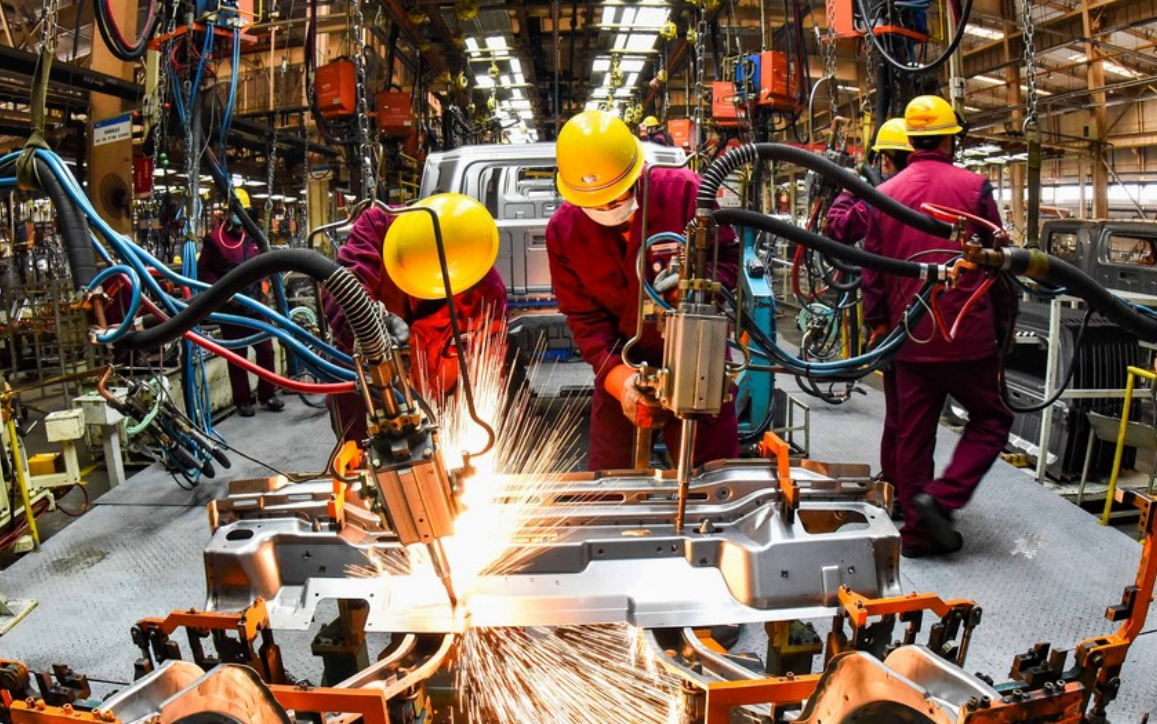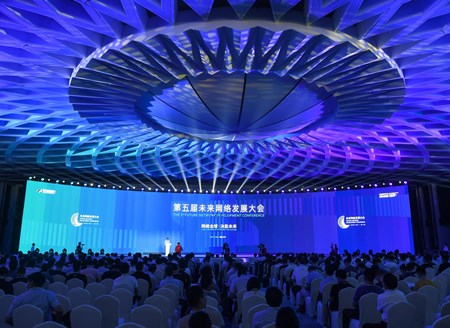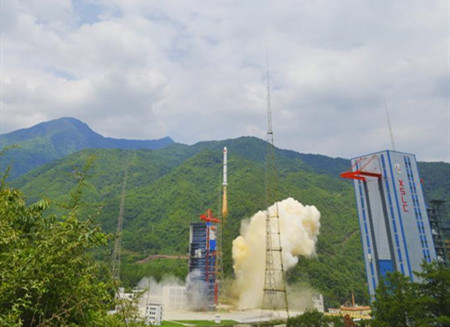
Workers weld components at a workshop of an automobile manufacturing enterprise in Qingzhou City, east China's Shandong Province, Feb. 28, 2021. (Photo by Wang Jilin/Xinhua)
BEIJING, Dec. 17 (Xinhua) -- China's top economic planner and the industry ministry have unveiled heavyweight industrial policies to shore up weak links and better utilize strengths and potential, providing a booster for the high-quality development of the industrial sector.
On Tuesday, the country announced 16 measures in a plan jointly issued by the National Development and Reform Commission (NDRC), and the Ministry of Industry and Information Technology. It highlighted stable development and invigorating market entities.
-- Why is the plan important?
The industrial sector is the main body of the national economy, and to ensure economic stability, it should maintain stable development, NDRC spokesperson Meng Wei said during a Thursday press conference.
Stable development will be a priority while pursuing progress in next year's economic work, said the tone-setting Central Economic Work Conference held last week.
The plan will also help defuse outstanding problems and potential risks, boost market confidence, and stabilize industrial growth expectations. The industrial economy has seen increasing downward pressure since Q3 due to the combined impact of short-term, cyclical, and structural factors.
-- What's the industrial sector status quo?
According to data from the National Bureau of Statistics (NBS) on Wednesday, China's value-added industrial output, a significant economic indicator, went up 3.8 percent year on year in November. During the first 11 months of 2021, the value-added industrial output rose 10.1 percent from last year.
This output measures the activity of designated enterprises with an annual business turnover of at least 20 million yuan (about 3.14 million U.S. dollars).
Profits of China's major industrial firms surged 42.2 percent, year on year, in the January-October period to top 7.16 trillion yuan, NBS data showed.
However, the industrial sector still faces pressures, including high prices of bulk raw materials and the lagging behind of the recovery of consumption and investment, which impede the sector's smooth operation.
- How will the plan address the issues?
Topping the agenda is to remove impediments in the industrial economy to ensure a smooth circulation given the mentioned pressures.
China will ensure energy security and supply, suspending all taxes for coal power and heat-supply enterprises in the fourth quarter of this year.
The country seeks to stabilize the supply and prices of bulk raw materials and strengthen the oversight of commodity futures and spot markets.
Efforts will also ensure smooth industrial and supply chains, focusing on core technology innovation and core areas such as new-energy vehicles and medical equipment.
-- Where does the potential of the industrial economy lie?
China has a middle-income population of over 400 million, the largest globally, with a massive demand for consumption upgrades. This demand creates a new driving force for the high-quality development of the industrial economy.
The plan said a batch of new-type of infrastructure projects such as 5G will be launched, and the building and application of industrial internet will be accelerated.
New businesses and new models will be encouraged to meet potential consumption needs, it added.
The plan also emphasized better use of foreign capital and steady development of foreign trade. Manufacturing will be an encouraged sector for investment, and an international logistics service network will be built.
China will improve policy systems in strategic regions, strengthen financing support for the manufacturing industry, and help firms navigate employment challenges.
More efforts will be made to reduce burdens on medium and small companies and optimize market environments, added the document.






